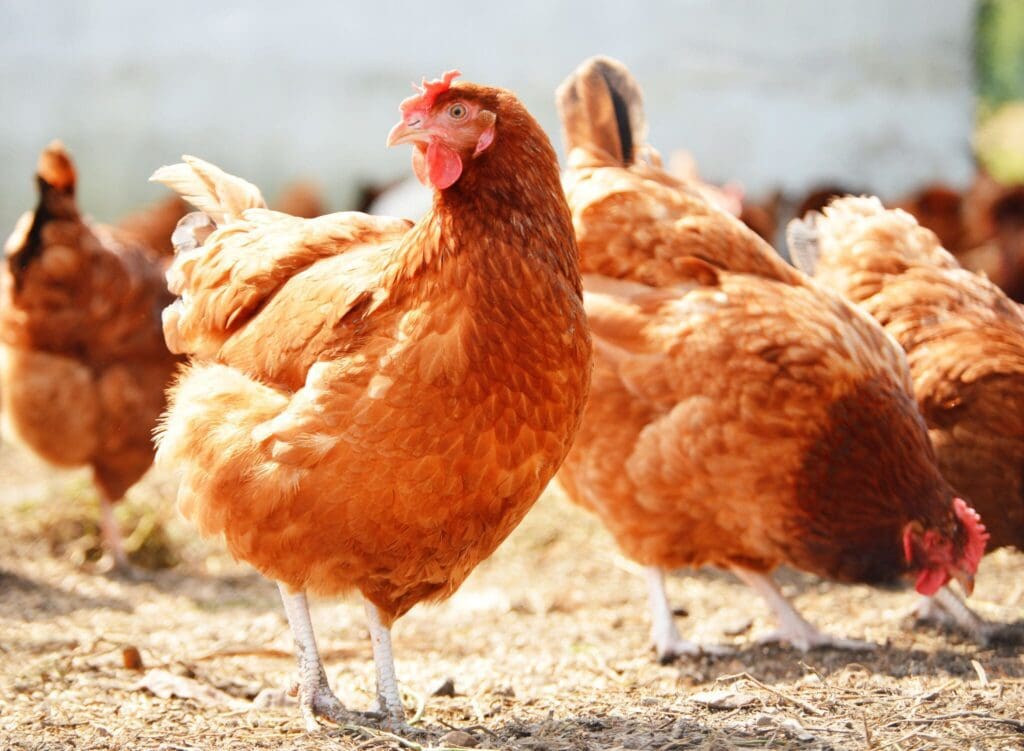Commercial breeding hens are under great pressure to consistently produce high-quality, fertile eggs, at a high frequency. These birds’ metabolism and immunity are in hyperdrive throughout the production cycle and these need to function optimally and without fail. Moreover, the hen must be able to withstand several physiological, physical, and environmental stressors without compromising on production. The breeder hen requires optimum nutrient uptake and utilisation, especially of essential trace minerals, for optimum functionality. As cofactors of numerous enzymes and physical components of various proteins, trace minerals are essential to enable and support the metabolic systems involved in immunity, growth, and reproduction. If her immune system, metabolism, health, and reproductive system function optimally, she will be more productive for a longer period and thus also be more profitable. To meet the daily requirements, trace minerals are supplemented in the diets of breeding hens.
The top three minerals for breeding hens: Zinc, manganese, and copper
Zinc is one of the most widely studied trace minerals and has been shown to be associated with over 300 enzymes, over 2 000 transcription factors, and many metabolic functions in animal physiology. The highest concentrations of zinc are in the liver, bones, kidneys, and muscles. Zinc levels in each of these storage sites change during illness or stressful situations, indicating that zinc plays a role in immunity and disease prevention. Furthermore, zinc has been shown to modulate gut morphology and to increase the integrity of tight cell junctions between enterocytes in the gastrointestinal tract.
Manganese is present in almost every cell in the body and has been shown to be integral for reproduction efficiency, proper bone and cartilage formation, and antioxidant function. A deficiency in manganese has been linked to poor skeletal growth, reduced immunity, impaired reproduction, and the production of small, weak offspring. Manganese plays a role in progesterone secretion, with a drop in progesterone leading to embryonic loss. Manganese also forms part of neuron cells and so promotes brain function by enabling neuron signalling.
Copper is associated with iron metabolism and oxidation, where ferrous iron is converted to the ferric state, and then used for red blood cell formation. It plays a critical role in antioxidation and antimicrobial activity in the gut, ensuring that the hen is in a good physiological state to remain productive during stressful conditions.
Zinc, manganese, and copper have all-round benefits for the hen, leading to higher health status, improved defence against disease, and a longer productive lifespan. All three minerals are part of cellular antioxidant enzymes, such as superoxide dismutase and catalyse. They scavenge free radicals and thus protect cell membranes from oxidative damage, which is vital during times of stress. Research by Pereira et al. (2020) showed that breeding hens supplemented with more bioavailable sources of zinc, manganese, and copper reached 35% of egg production two days earlier than the group receiving inorganic trace minerals. They also found increased tibia bone weight, increased immune cells in serum, increased oviduct weight, and higher levels of follicle-stimulating hormone, which may be indicative of the roles these trace minerals play in optimal reproduction and embryo development.
Iron, selenium, and chromium
Iron has two important functions. Firstly, it carries oxygen to various body tissues as a component of haemoglobin and myoglobin. Secondly, iron functions as a cellular antioxidant, either as part of the antioxidant enzyme catalyse or by the Fenton reaction. All cells in the body require oxygen and supplementation of iron has been shown to reduce the prevalence of ascites and anaemia. A study in 2019 by Ebbing et al. compared the effects of different iron sources on egg production, eggshell colour, and hatchability of progeny, as well as the haematological status of chicks and their performance. In this study, the researchers found significant improvements in these measured parameters and concluded that iron is vital for metabolism and performance. Iron deficiency has been linked to a reduction in immune capacity and a decrease in antimicrobial activity.
Selenium is a component of glutathione peroxidase and plays an indispensable role in the protection of cells from free radicals and oxidation during times of stress. A deficiency in selenium has been linked to nutritional muscular dystrophy, impaired fertility, and even death.
Chromium plays a critical role in glucose metabolism and feed efficiency during stressful conditions. Cortisol is a marker for metabolic stress. With chromium being reported to reduce cortisol levels in the blood, it may be concluded that chromium supplementation can reduce stress levels and the detrimental effects that stress has on the animal.
Conclusion
A breeding hen has a significant task at hand – producing high-quality, fertile eggs for an extended production cycle. The pressure placed on her physiological abilities is high and will require her to be in optimum health. She needs to withstand environmental stressors (feed, water, competition, climate, management), as well as physiological stressors (disease, inflammation, oxidative stress). What is more, she needs to continue producing in the midst of these challenges. The only way she can fulfil this responsibility is if she has been supplied with all the necessary nutrients to satisfy her body’s requirements. Especially when it comes to trace minerals, supplying breeding hens with highly bioavailable forms will better support them in this mission because more minerals will be absorbed and available at the tissue level. As a result, the trace minerals that she needs to build a high-quality egg will be more readily incorporated into the eggshell and egg membranes. Finally, the minerals she needs to transfer to her progeny, for their own development, will be right where they are needed to be absorbed by the embryo. Stay tuned for the next instalment, where this next stage will be explored.









